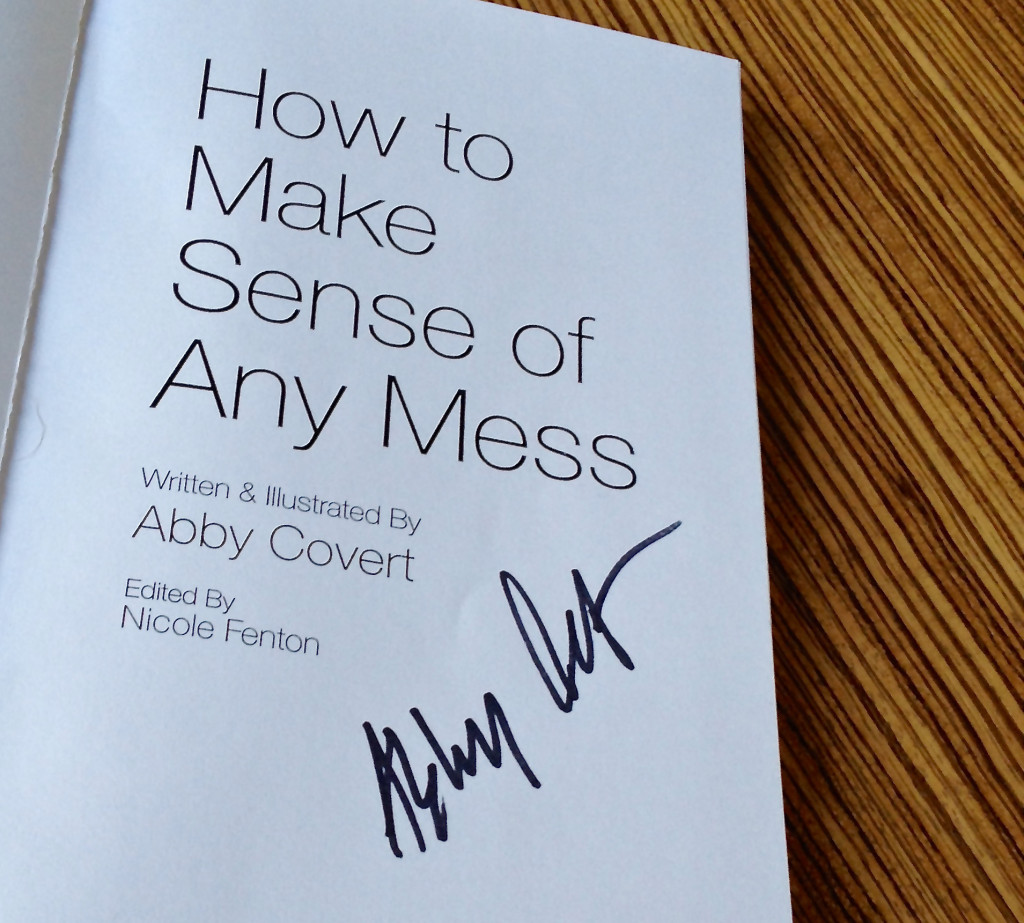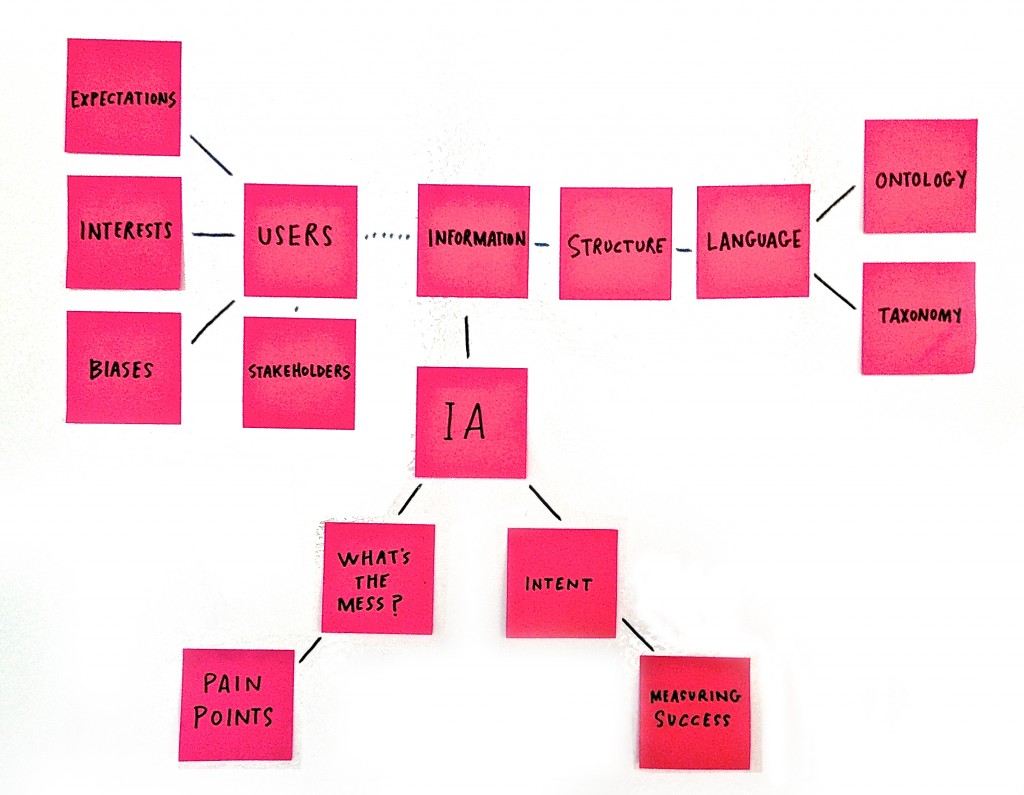
Information architecture is one of those disciplines that overlaps with so many other fields, it seems to be everywhere all at once. Abby Covert’s How to Make Sense of Any Mess is a terrific introduction to IA, helping to define just what it is and explain how to apply it to just about anything. It’s a quick read too so bring it along on the subway and you’ll feel smarter by the time you get home.
At a UX Book Club Meetup I recently attended (with the author herself present!), I got to hear Abby speak about her field and how this book came to be. I’d advise reading it with a specific mess in mind and as you go through it, apply the principles she outlines to that mess. Here’s my run down of some of those key principles:
1. Information is Subjective
In fact, when people are involved, pretty much everything is subjective. If you’re trying to communicate something, remember: it’s not about what you present, it’s about what people take away. Meaning gets lost in translation in subtle and not-so-subtle ways so consider all the ways a message could be misinterpreted. And watch out for differing interpretations.
2. Know Your User (Don’t Assume)
Users are idiosyncratic and often want contradictory things. Or they say they want something but don’t really act as if they do. Any audience will have disparate and overlapping interests and biases; their own expectations and desires. So don’t assume anything and try to understand where your particular audience is coming from.
Don’t forget about other stakeholders either. Every project will have many masters. You can’t satisfy everyone so determine who matters most—and why does this project matter at all—and let that guide everything you do.
3. Define Good
What’s really your intent? What’s a good outcome and good for whom, the client or the user? And how do you measure all this?
Begin by understanding where you are now and where you want to go based on your intent. Then, determine what changes you can track that are relevant to that intent. No matter how you measure your progress, make sure it’s toward your stated goal.
4. Language Matters
Every word you choose is a tradeoff. So always keep in mind what you’re not conveying and what you’re okay with people not getting.
Ontology is what you call something. Taxonomy is how you categorize something. They both should be considered and customized.
5. Draw and Diagram
The most useful part of the book for me was a set of 10 types of diagrams Abby illustrates. Just determining what kind of diagram would best represent a given mess is a big help in understanding it.
Visualizing any problem or process allows you to zoom out on it and often creates valuable insights. Visualizing collaboratively can be an even more rewarding experience.

In the end, it helps to remember that human-centered design means accounting for all the unexpected ways humans actually behave. How To Make Sense of Any Mess is a great book for doing just that.
Oh yeah, if you curious to hear more from Abby, she’ll be speaking at Radish Lab’s own Designing Change Meetup, along with Donna Lichaw, coming up on Tuesday, March 31! See you there!